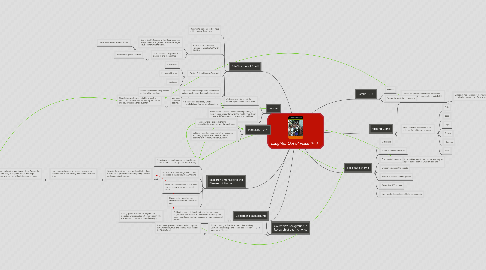
1. Women
1.1. We know very little about the women's perspective of the world.
1.1.1. Women's Popular Culture is spread orally. However, this is not necessarily done in a public setting.
1.1.1.1. Goldstein says she was not able to see the discontent of these women directly, but rather she could hear it in their laughter.
1.2. Women were paid less than livable wages and yet were in close encounters with the wealthy. Goldstein notes the difference and compares it to the United States.
2. Research Emphasizing the Element of Humor
2.1. Establishing connections and relationships of humor with race, class , gender, and sexuality.
2.2. Humiliation is something common and expressed in the Favelas(Shantytowns)
2.2.1. Despite the wrath of power and humiliation there was much laughter and humor regarding political and economic structures.
2.2.1.1. Humor opened up and unraveled the ways that the members of this society understand their own lives.
2.2.1.1.1. Humor gives the members of these favelas the opportunity to express things that might otherwise be very difficult to communicate.
2.3. Social Science literature sees humor as a conservative or radical social force.
2.4. Humor is also seen in some analyses to reinforce the status quo.
3. Goldstein's Background
3.1. Goldstein's own childhood relates to the humor and laughter she saw present in the Favelas. Her family also faced many hardships, but managed to have comic relief present.
3.1.1. Having grown up in the setting she did, Goldstein understands a little more about why she focuses on humor in this ethnography.
4. Inequality
4.1. Families within Felicidade Eterna exemplified the poorest and the wealthiest.
4.2. Goldstein faced an inner conflict of feeling guilty about enjoying some of the amenities of Rio knowing that so many others would not.
5. Goldstein's Background in Research of Latin America
5.1. Prior to coming to Brazil she spend time studying Latin American groups and served as a research assistant in Mexico.
5.1.1. Brazil was expressed to her as a distinct part of Latin American, thus she spent 3 years starting in 1988 in Brazil.
6. Brief History of Brazil
6.1. Believed to be home to two-four million Native Americans.
6.2. Pedro Cabral sailed from Portugal to Brazil in 1500 with 13 ships.
6.2.1. Due to the Portuguese influx, Brazil became a top producer of sugar and became the largest slave economy in the world.
6.2.1.1. Slavery decreased around 1850's.
6.2.2. Later became a top producer of diamonds and then coffee.
6.2.2.1. Italians immigrated to Brazil
6.3. 1800's - Political Groups Emerged
6.3.1. Absolutists
6.3.2. Moderate Liberals
6.3.3. Exaltados
6.4. Large wave of military political leaders that had no rush to see a democratic transition.
6.4.1. Inflation diminished the presence of the military leaders.
6.5. It is expressed that today, Brazil is currently living a form of social apartheid.
7. Visiting Gloria
7.1. Gloria's daughter Soneca tells Goldstein of Zuca''s death as if it were nothing and slightly humorous.
7.1.1. Goldstein was shocked of the news, but also by the reaction of the women.
7.1.1.1. It was still hard for Goldstein to wrap around the news of Zeca.
7.2. 1991, Gloria had taken care of 14 children. 6 of which were her own.
7.2.1. Felix
7.2.2. Zeca
7.2.3. Tiago
7.2.4. Soneca
7.2.5. Filomena
7.2.6. Anita
